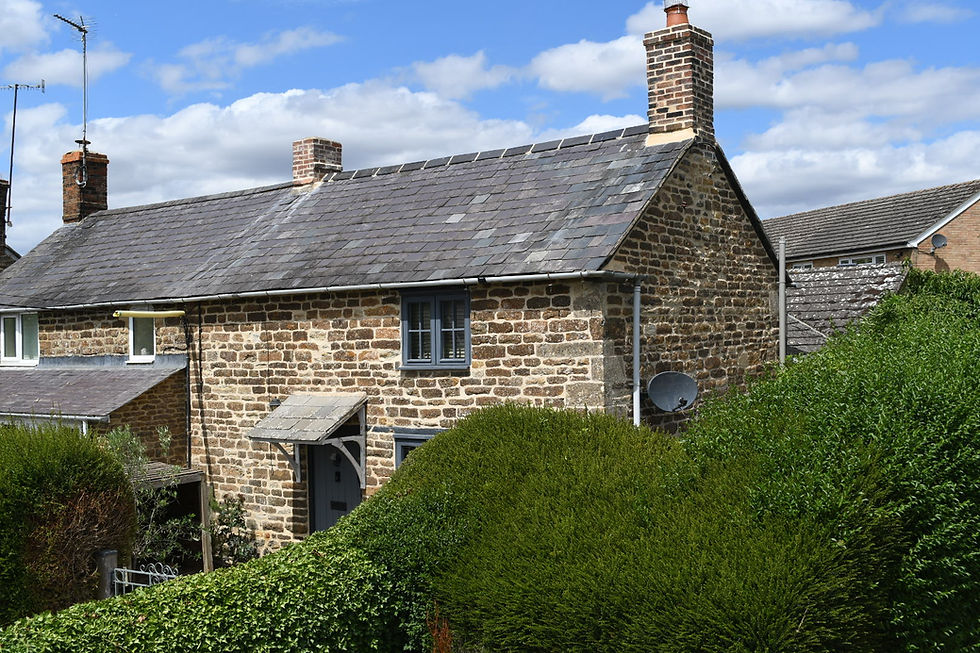Grade II Listed Cotswold Cottage hot-mixed lime repointing
- russetandsage
- Jun 26
- 2 min read

This has become a real favourite project. A beautiful Cotswold cottage, we had the pleasure of working on at the start of the year. This property was repointed with a hot mixed quicklime mortar through January. The front elevation and both gables were completed before the building company working on a nearby property had considered it warm enough to carry out the work (they were using hydraulic lime). This goes to show one of the many benefits of using hot mixed mortar, which is a very traditional method of creating lime mortar for historic properties. The Gable and front elevation in the photo above receive almost no sunshine throughout the day. The gable end
gets a small amount of morning sun, and the front elevation gets a very small amount of evening sun, as shown. Despite this, Work progressed well, and we were able to deliver this fantastic outcome.
This property took around nine weeks to complete (the rear elevation was not repointed). This is a good example to demonstrate the relative softness of iron stone, limestone, which has iron oxide deposits within its structure. The ferris content will rust and cause expansion and therefore deterioration of the stone. Only ironstone was replaced on this building. There are an enormous number of ironstone buildings in the Banbury region (near where we are based) that are built entirely with ironstone (Marlestone). The decay of these buildings is apparent. It's so important to have a highly breathable lime mortar that can preferentially allow moisture movement through the soft mortar joints, acting sacrificially to protect the soft stone. All of the iron stone was replaced with iron stone. This is due to the listed status of the building, not just to replace like for like, but also to maintain the character and significance of this building.
One of the most fascinating elements of this building was the number of Apotropaic marks (witch marks) found internally and externally. The fireplace lintel had burn marks, now believed to have been intentionally applied to properties as a form of protection. In addition to this, commonly found overlapping Vs were carved, thought to relate to the Virgin Mary, the Virgin of Virgins. Externally, lead flashing at the base of one of the dormer windows showed etchings made around a pair of hands and a foot, dated, and inscribed with the same marks.
This property is also a lovely demonstration of our creamy heritage mortar. Hot-mixed, with carefully selected sands to achieve a softer colour than some of our earlier mortars, whilst still creating a workable mortar that performs. Below shows some historic lime mortar, still with spots of cement from the later repoint, and next to it, our mortar freshly brushed. The third image shows the mortar used to repoint the mullion windows, coloured more heavily to blend in with the stone, allowing the mullions to sit with unbroken lines as they should have originally.


































